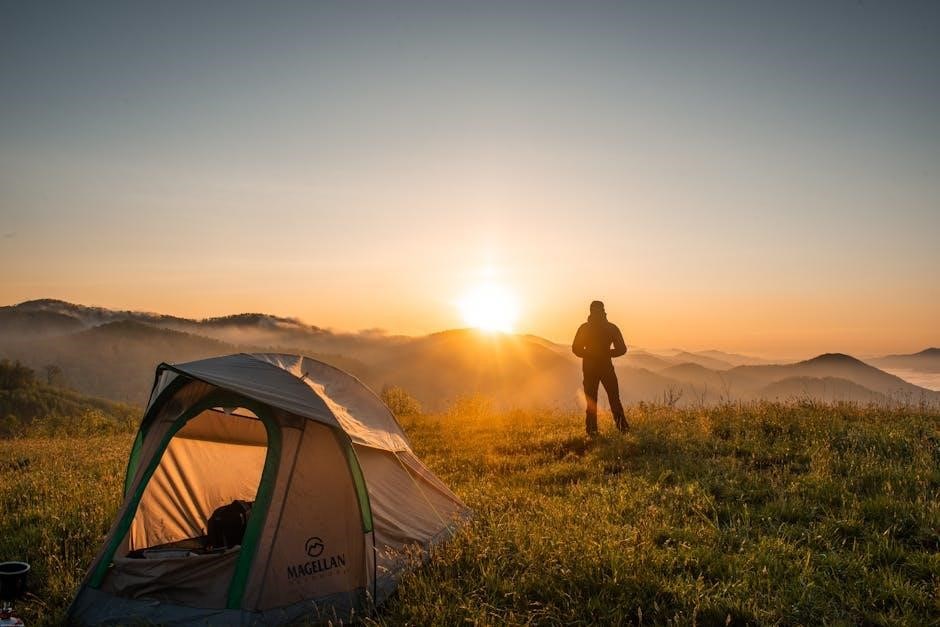The Junior Camper Badge is a 12-page guide for Girl Scouts to earn their Camper Badge by planning an overnight trip, learning outdoor skills, and gaining leadership experience.
1.1 Overview of the Junior Camper Badge
The Junior Camper Badge is a 12-page guide designed for Girl Scouts to earn their Camper Badge by planning and completing an overnight camping trip. It focuses on developing essential outdoor skills, such as setting up a campsite, building a campfire, and cooking in nature. The badge also emphasizes teamwork and leadership, encouraging girls to collaborate and take on roles that strengthen their confidence. By following the steps outlined in the guide, Junior Girl Scouts can gain hands-on experience and create lasting memories while exploring the outdoors. The program is structured to be both educational and fun, helping girls build a deeper connection with nature and their peers.
1.2 Importance of Outdoor Skills for Junior Girl Scouts
Outdoor skills are foundational for Junior Girl Scouts, fostering self-reliance, confidence, and a deeper connection with nature. The Junior Camper Badge requirements encourage girls to master essential camping skills, such as setting up tents, building campfires, and outdoor cooking. These experiences teach teamwork, problem-solving, and leadership, which are vital for personal growth; By learning to navigate the outdoors, girls develop resilience and a sense of accomplishment. These skills extend beyond camping, empowering them to embrace challenges in all areas of life. The program also strengthens bonds among scouts, creating lifelong memories and a shared sense of adventure. Outdoor skills are a cornerstone of the Junior Camper Badge, preparing girls for future leadership and exploration.
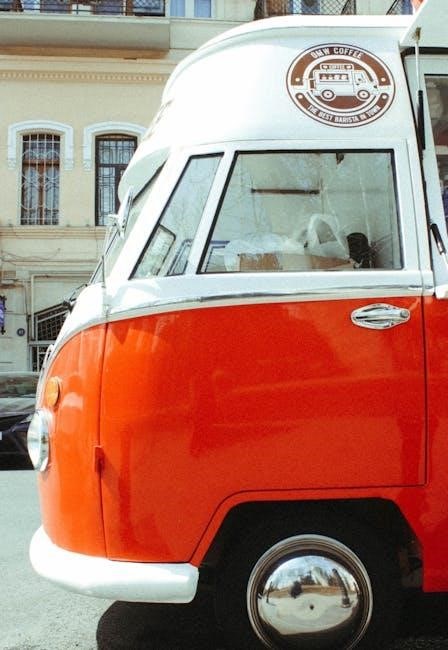
Requirements for Earning the Junior Camper Badge
The Junior Camper Badge requires girls to plan an overnight trip, learn essential outdoor skills, and demonstrate teamwork. A 12-page pamphlet outlines the steps needed.
2.1 Understanding the Badge Requirements
The Junior Camper Badge requires girls to demonstrate proficiency in outdoor skills and leadership. A 12-page guide outlines the steps, focusing on planning an overnight trip, setting up camp, and cooking outdoors. Girls must also show teamwork and safety awareness. The badge emphasizes environmental stewardship and emergency preparedness. Completion involves documenting progress and a final review. The pamphlet provides detailed instructions, ensuring girls understand each requirement before earning the badge. This structured approach helps build confidence and readiness for outdoor adventures, aligning with the Girl Scout mission of empowering girls through hands-on experiences. The badge is sold separately, with the guide serving as the primary resource.
2.2 Steps to Complete the Camper Badge
Earning the Junior Camper Badge involves a structured process outlined in the 12-page guide. First, girls plan an overnight camping trip, selecting a suitable campsite and creating an itinerary. Next, they learn and demonstrate outdoor skills such as setting up a tent, building a campfire safely, and preparing meals. Environmental awareness and teamwork are emphasized throughout the process. Girls must also understand safety protocols and emergency preparedness. Documentation of their progress is required, with a final review by leaders to confirm completion. The guide provides step-by-step instructions, ensuring girls are well-prepared to earn the badge and gain confidence in their abilities.
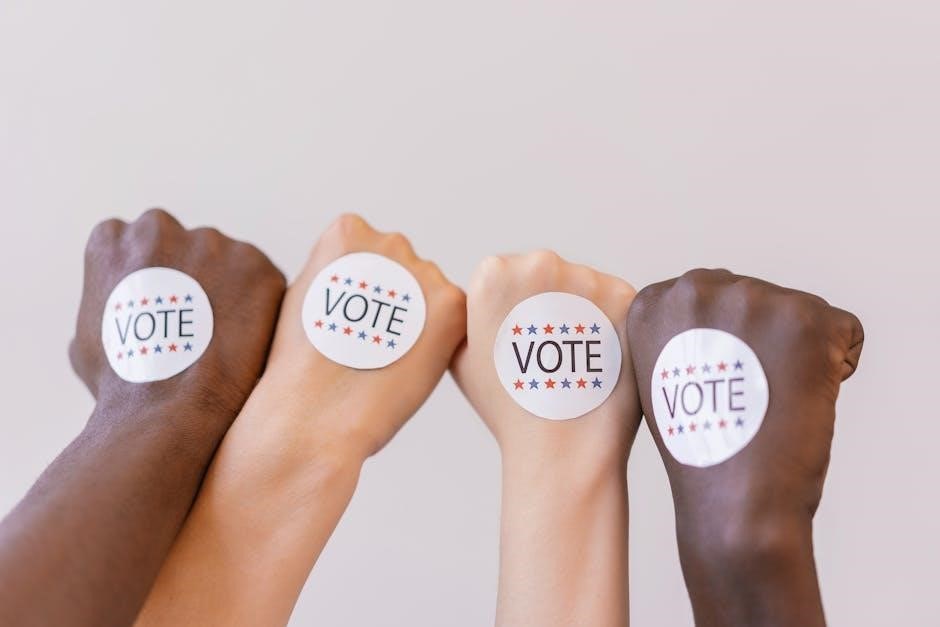
Planning a Camping Trip
Planning a camping trip involves selecting a campsite, creating an itinerary, and preparing girls for the adventure. Leaders guide scouts in mapping the site and reviewing safety.
3.1 Selecting a Campsite
Selecting a campsite is a crucial step in planning a camping trip for Junior Girl Scouts. Leaders should consider safety, accessibility, and amenities suitable for the group’s needs. The site should offer flat ground for tents, access to water, and restrooms. Ensure the location aligns with the skill level of the scouts, whether it’s a developed campsite or a more primitive area. Check for any necessary permits or environmental restrictions. Involve the scouts in the decision by discussing factors like proximity to hiking trails or scenic views. A well-chosen campsite sets the foundation for a positive and enjoyable outdoor experience. Leaders should inspect the site beforehand to confirm its suitability.
3.2 Creating a Camping Itinerary
A well-structured camping itinerary is essential for a successful Junior Camper Badge trip. Start by outlining arrival and setup times, followed by meal schedules. Include activities like tent assembly, campfire building, and outdoor skill sessions. Allocate time for nature exploration, team-building games, and free time for relaxation. Ensure the itinerary balances structured activities with flexibility for unexpected events. Plan evening programs, such as stargazing or campfire stories, to foster camaraderie. Share the schedule with scouts beforehand to build excitement and ensure everyone knows their roles. Involve scouts in planning to teach them responsibility and leadership. Keep the itinerary realistic and adaptable to weather or group needs.

Essential Outdoor Skills
Mastering outdoor skills is vital for Junior Camper Badge requirements, focusing on tent setup, campfire building, and outdoor cooking. These skills ensure safety and confidence.
4.1 Setting Up a Tent and Campsite
To earn the Junior Camper Badge, girls must demonstrate the ability to set up a tent and campsite effectively. Start by selecting a flat, dry area free from debris. Clear the ground of rocks and branches to ensure a smooth surface. Unpack the tent and identify the poles, typically color-coded for easy assembly. Attach the poles to the tent corners, ensuring they are securely snapped into place. Stake the tent down using sturdy plastic or metal stakes at an angle to maximize stability. Tighten the rain fly to protect against rain and ensure it is properly secured. Finally, organize the campsite by arranging gear, such as sleeping bags and clothing, neatly inside the tent. Practice this process to build confidence and efficiency.
4.2 Building a Campfire Safely
Building a campfire safely is a critical skill for Junior Girl Scouts. Start by choosing a safe location, away from trees, tents, and flammable materials. Clear the area of leaves, grass, and debris. Use rocks to create a fire ring if one isn’t already present. Prepare the fire pit by digging a shallow hole and ensuring the surrounding area is clear. Gather tinder, kindling, and larger logs, arranging them in a teepee or log cabin structure for better airflow. Light the fire using matches, a lighter, or firestarters, starting from the windward side. Keep water or sand nearby for emergencies. Once the fire is burning well, add larger logs to sustain it. Teach girls to monitor the fire and fully extinguish it before leaving by soaking the ashes in water and stirring to ensure no heat remains.
4.3 Outdoor Cooking Basics
Outdoor cooking basics are essential for Junior Girl Scouts to master. Start with meal planning, focusing on simple, nutritious meals that are easy to prepare in the wilderness. Practice food safety by storing food and trash properly to avoid attracting wildlife. Learn to use camping stoves or Dutch ovens for preparing meals. Teach girls how to grill foods like vegetables and proteins over a campfire. Emphasize the importance of using utensils and keeping a clean cooking area. Demonstrate how to boil water safely for hydration and cooking. Finally, stress the need to clean up thoroughly, leaving the campsite as it was found. This skill fosters self-reliance and teamwork.
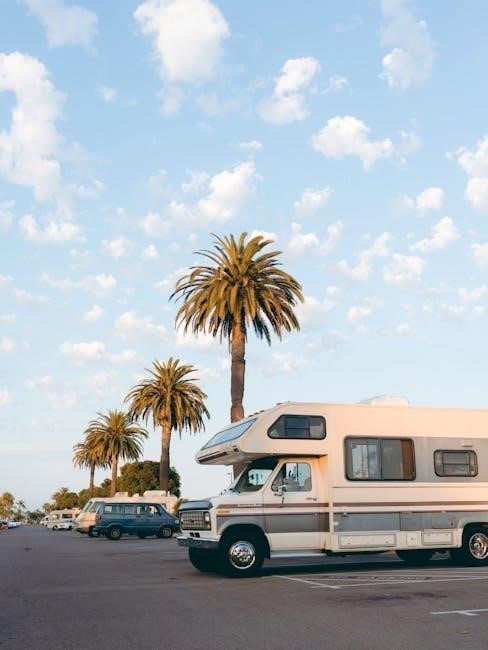
Environmental Awareness
Environmental awareness fosters an appreciation for nature and conservation. Junior Girl Scouts learn sustainable practices to protect ecosystems, promoting a healthier planet for future generations.
5.1 Leave No Trace Principles
Leave No Trace principles are essential for preserving natural environments. Junior Girl Scouts learn to minimize their impact by planning ahead, staying on trails, and disposing of waste properly. They understand the importance of leaving plants, rocks, and wildlife undisturbed. Campfires are managed responsibly, and scouts avoid disturbing natural habitats. By following these guidelines, scouts contribute to protecting ecosystems for future generations. These practices foster a deep respect for nature and promote sustainable outdoor adventures.
5.2 Identifying Local Wildlife and Plants
Identifying local wildlife and plants is a key skill for Junior Girl Scouts earning the Camper Badge. Scouts learn to recognize common species using field guides or apps, helping them understand ecosystems. They discover how plants and animals adapt to their environments and the importance of preserving biodiversity. Scouts are encouraged to observe without disturbing, respecting wildlife habitats. This knowledge enhances safety, as they learn to avoid harmful plants or animals. By fostering curiosity and appreciation for nature, scouts gain a deeper connection to the outdoors, promoting responsible exploration and stewardship of natural spaces. This skill enriches their camping experiences and environmental awareness.
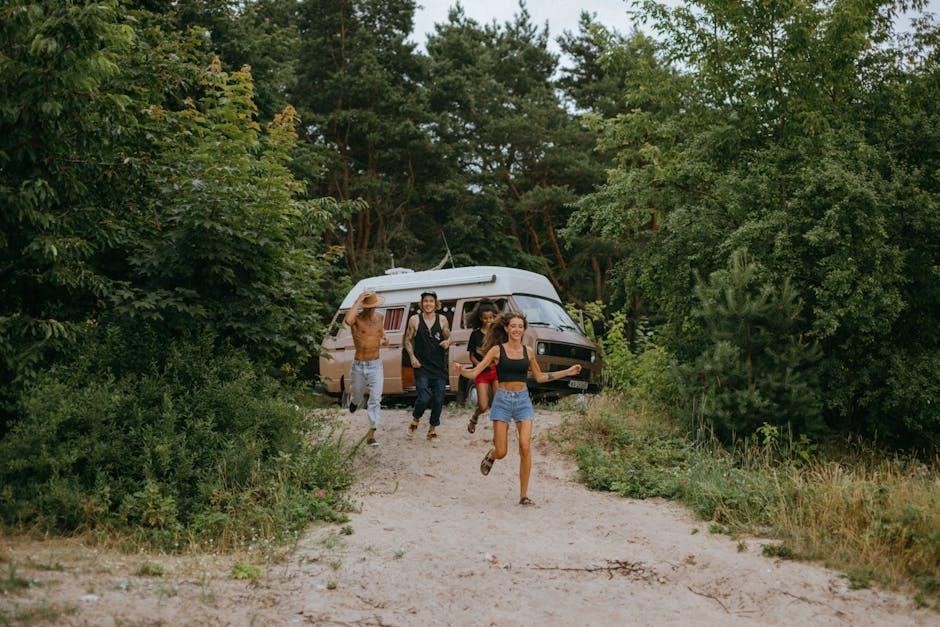
Teamwork and Leadership
Teamwork and leadership are essential for Junior Camper Badge success. Scouts collaborate on tasks, building trust and problem-solving skills. Leadership roles empower girls to guide and inspire others.
6.1 Collaborating with Fellow Scouts
Collaborating with fellow scouts is a key aspect of earning the Junior Camper Badge. Girls work together to achieve shared goals, fostering teamwork and communication. Whether setting up camp, preparing meals, or completing outdoor challenges, collaboration strengthens bonds and builds trust. Scouts learn to rely on each other’s strengths and support each other through difficulties. This teamwork helps develop problem-solving skills and mutual respect. By working collectively, Junior Girl Scouts gain confidence and a sense of accomplishment, preparing them for future group endeavors. Collaboration is not only fun but also essential for a successful camping experience. It encourages girls to value unity and cooperation in all aspects of life.
6.2 Taking on Leadership Roles
Taking on leadership roles is a vital part of earning the Junior Camper Badge, as it helps girls develop confidence and responsibility. Scouts are encouraged to lead specific tasks, such as organizing activities or guiding their group during hikes. Leadership roles allow girls to practice decision-making, communication, and problem-solving skills. By stepping into these roles, they learn to inspire and motivate others, fostering a sense of accountability and teamwork. Leadership opportunities within the camping experience prepare Junior Girl Scouts to take charge in future challenges, both in and out of the outdoors. This fosters personal growth and empowers them to become capable leaders.
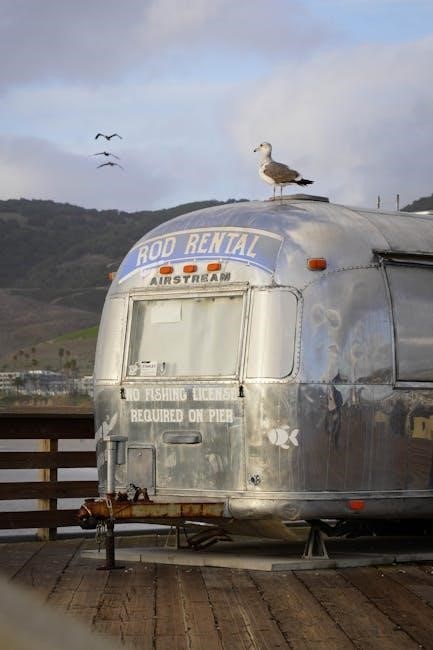
Safety and Emergency Preparedness
Safety and emergency preparedness are crucial for a successful camping experience. Girls learn to identify risks, create emergency plans, and stay prepared for unexpected situations.
7.1 Basic First Aid in the Outdoors
Basic first aid in the outdoors is essential for handling minor injuries and preventing more serious issues. Junior Girl Scouts learn to assess injuries, clean wounds, and apply bandages. They practice treating common camping injuries like cuts, scrapes, and burns. Scouts also learn how to recognize and respond to sprains, broken bones, and other accidents. Essential first aid skills include using cold compresses, applying splints, and administering basic care until professional help arrives. Having a well-stocked first aid kit and knowing its contents is also emphasized. Understanding when to seek medical attention is crucial. These skills ensure Scouts can handle emergencies confidently and responsibly while camping.
7.2 Understanding Emergency Procedures
Understanding emergency procedures is critical for Junior Girl Scouts to stay safe while camping. Scouts learn to create an emergency plan before trips, including evacuation routes and communication methods. They practice responding to situations like fires, severe injuries, or getting lost. Knowing how to call for help using devices like whistles or phones is emphasized. Scouts also learn to identify emergency shelters and natural water sources. Teaching girls to remain calm and follow established steps during crises is a key focus. This preparation helps build confidence and ensures they can act effectively until professional assistance arrives, keeping everyone safe and secure in outdoor settings.
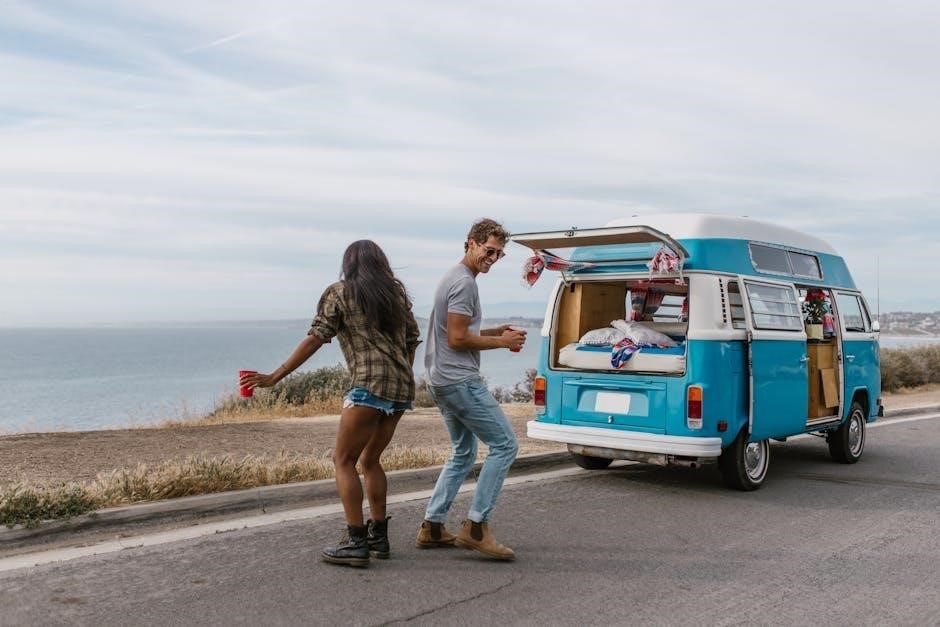
Completing the Badge Requirements
Completing the Junior Camper Badge requires demonstrating mastery of camping skills and knowledge. Scouts must finish all activities, document progress, and undergo a final review by leaders.
8;1 Documenting Progress
Documenting progress is a crucial step in earning the Junior Camper Badge. Scouts should keep a record of completed activities, such as photos, journals, or checklists. Leaders often provide forms or guidelines to track achievements. Each requirement, like setting up a tent or cooking outdoors, should be verified and dated. This documentation serves as proof of skill mastery and helps leaders assess readiness for the final review. Scouts are encouraged to reflect on their experiences, noting challenges and successes. Accurate and detailed records ensure a smooth process when submitting for badge approval. Proper documentation also helps troops stay organized and accountable throughout the camping journey.
8.2 Final Review and Badge Approval
The final review and approval process ensures all requirements for the Junior Camper Badge are met. Troop leaders evaluate completed activities, documented progress, and skill mastery. Scouts present their work, showcasing their understanding of camping skills, safety, and teamwork. Leaders verify that all tasks, such as setting up a tent, building a campfire, and outdoor cooking, have been successfully completed. Once approved, the badge is awarded, often during a troop meeting or ceremony. This recognition celebrates the scout’s hard work and dedication. Earning the Junior Camper Badge is a proud achievement, demonstrating a strong foundation in outdoor skills and leadership.
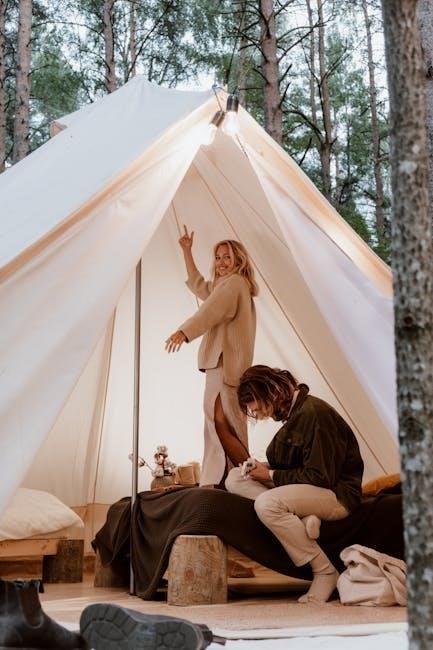
Additional Resources
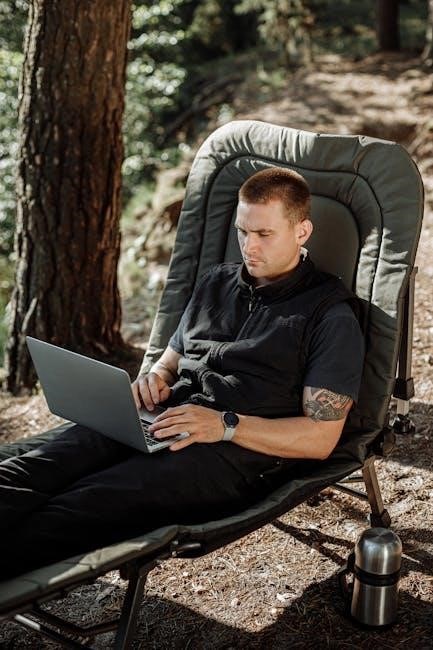
Find the Junior Camper Badge requirements PDF on the official Girl Scout website. Additional resources include camping guides, checklists, and skill-building activities to support your journey;
9.1 Where to Find the Junior Camper Badge PDF
The Junior Camper Badge PDF can be found on the official Girl Scout website. Visit the “Resources” or “Badge Requirements” section, where you’ll find downloadable guides. Local Girl Scout councils may also provide access to this document. Additionally, troop leaders often have copies or can direct you to the correct link. Ensure you’re using the most recent version by verifying the publication date. For easy access, search using keywords like “Junior Camper Badge PDF” or “Girl Scout camping badge requirements.” Always confirm the PDF is from an official Girl Scout source to ensure accuracy and authenticity.
9.2 Recommended Reading and Guides
To help earn the Junior Camper Badge, several resources are recommended. The official Girl Scout manual provides detailed requirements and activities. Additional guides include camping guidebooks, outdoor skill manuals, and safety handbooks. Books on wildlife identification and campfire cooking can also be helpful. Online resources, such as troop leader guides and camping checklists, offer practical tips. Encourage girls to explore these materials to deepen their understanding of camping skills and environmental stewardship. These resources can be found on the Girl Scout website or through local councils. They are designed to support both girls and leaders in achieving badge requirements successfully.
Earning the Junior Camper Badge empowers girls with essential outdoor skills, fostering confidence and teamwork while connecting them with nature. It’s a meaningful achievement that lasts a lifetime.
10.1 The Value of Earning the Junior Camper Badge
Earning the Junior Camper Badge is a rewarding experience that equips girls with essential outdoor skills, fostering independence, teamwork, and a deep connection with nature. It encourages girls to step out of their comfort zones, build confidence, and develop problem-solving abilities. By mastering camping fundamentals, such as setting up tents and building campfires, participants gain a sense of accomplishment and self-reliance. The badge also promotes environmental stewardship and leadership, preparing girls to take on future challenges with resilience. Referencing the Junior Camper Badge Requirements PDF ensures a comprehensive understanding of the skills and values this achievement embodies, making it a memorable milestone in their scouting journey.
10.2 Encouraging Others to Participate
Encouraging others to earn the Junior Camper Badge fosters a sense of community and shared growth within the troop. By sharing personal experiences and highlighting the fun, skill-building aspects of camping, girls can inspire their peers to join in. Leaders can emphasize how the badge strengthens teamwork, leadership, and outdoor confidence. Referencing the Junior Camper Badge Requirements PDF, they can outline the achievable steps and celebrate progress. Creating an inclusive environment where everyone feels supported motivates more girls to participate. This collective effort not only enhances individual growth but also strengthens the troop’s bond, making the scouting journey more enjoyable and impactful for all.
